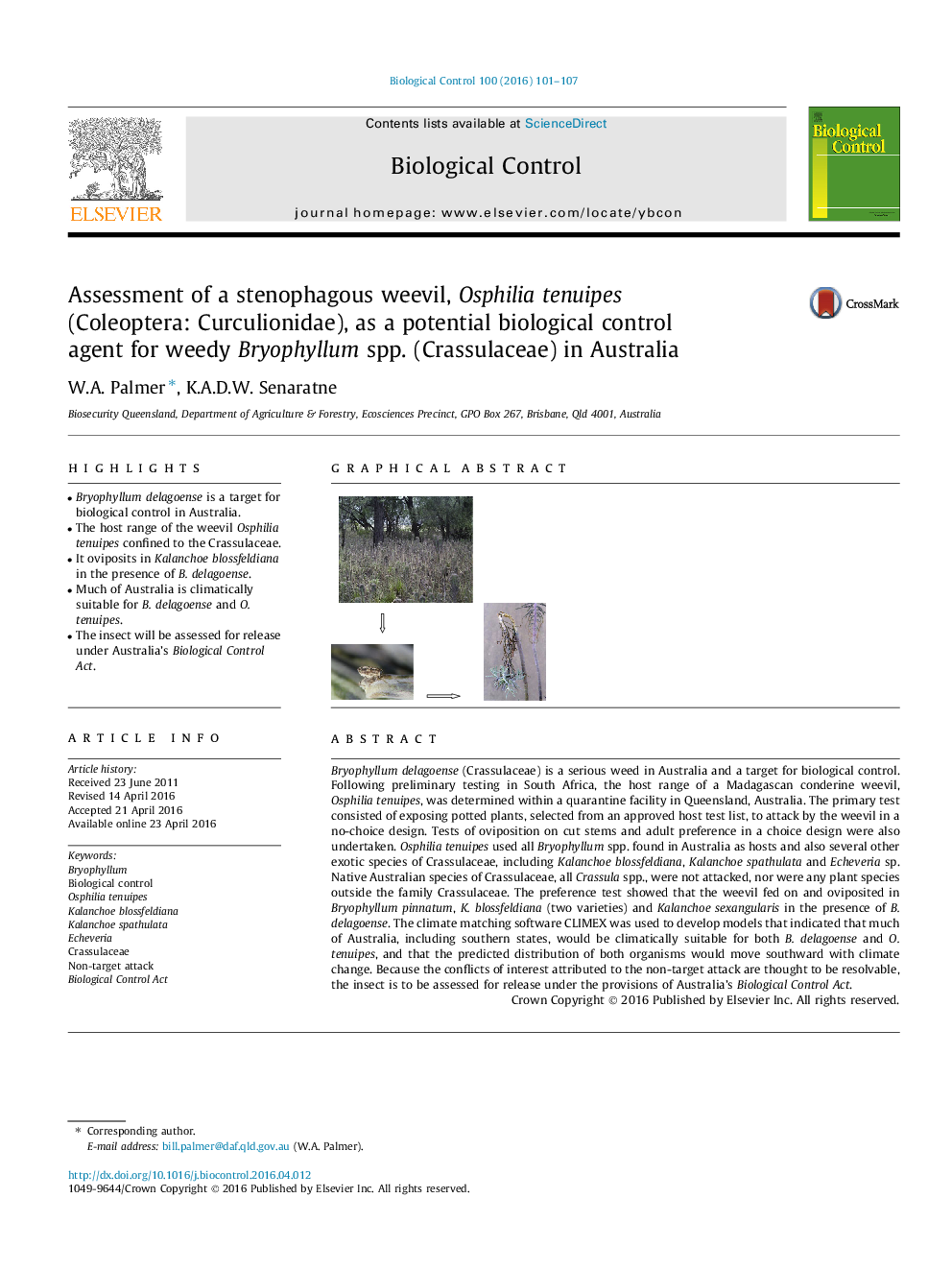| کد مقاله | کد نشریه | سال انتشار | مقاله انگلیسی | نسخه تمام متن |
|---|---|---|---|---|
| 4503593 | 1624234 | 2016 | 7 صفحه PDF | دانلود رایگان |

• Bryophyllum delagoense is a target for biological control in Australia.
• The host range of the weevil Osphilia tenuipes confined to the Crassulaceae.
• It oviposits in Kalanchoe blossfeldiana in the presence of B. delagoense.
• Much of Australia is climatically suitable for B. delagoense and O. tenuipes.
• The insect will be assessed for release under Australia’s Biological Control Act.
Bryophyllum delagoense (Crassulaceae) is a serious weed in Australia and a target for biological control. Following preliminary testing in South Africa, the host range of a Madagascan conderine weevil, Osphilia tenuipes, was determined within a quarantine facility in Queensland, Australia. The primary test consisted of exposing potted plants, selected from an approved host test list, to attack by the weevil in a no-choice design. Tests of oviposition on cut stems and adult preference in a choice design were also undertaken. Osphilia tenuipes used all Bryophyllum spp. found in Australia as hosts and also several other exotic species of Crassulaceae, including Kalanchoe blossfeldiana, Kalanchoe spathulata and Echeveria sp. Native Australian species of Crassulaceae, all Crassula spp., were not attacked, nor were any plant species outside the family Crassulaceae. The preference test showed that the weevil fed on and oviposited in Bryophyllum pinnatum, K. blossfeldiana (two varieties) and Kalanchoe sexangularis in the presence of B. delagoense. The climate matching software CLIMEX was used to develop models that indicated that much of Australia, including southern states, would be climatically suitable for both B. delagoense and O. tenuipes, and that the predicted distribution of both organisms would move southward with climate change. Because the conflicts of interest attributed to the non-target attack are thought to be resolvable, the insect is to be assessed for release under the provisions of Australia’s Biological Control Act.
Figure optionsDownload as PowerPoint slide
Journal: Biological Control - Volume 100, September 2016, Pages 101–107